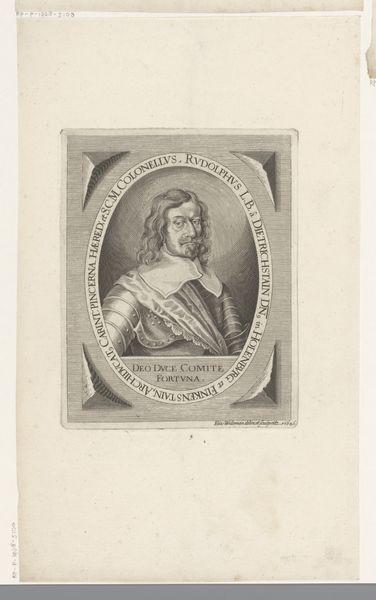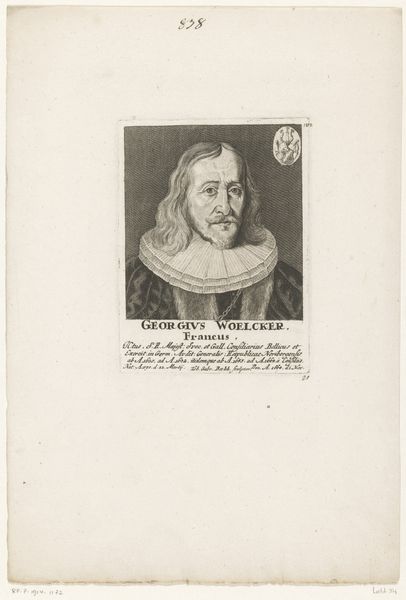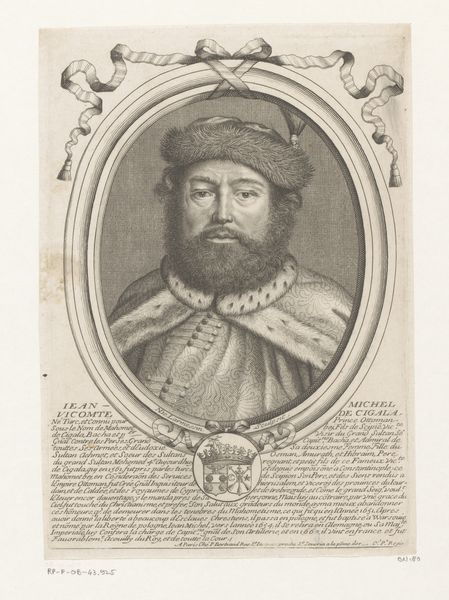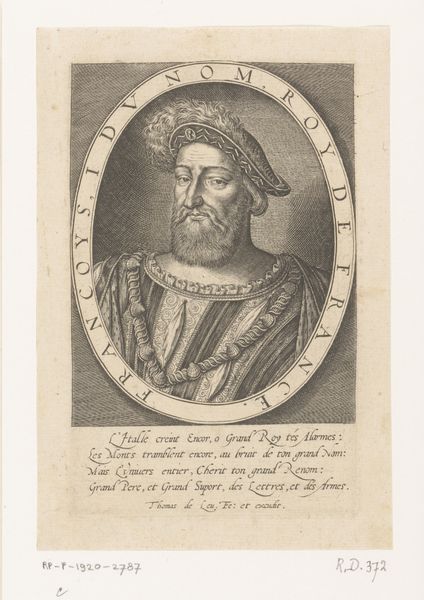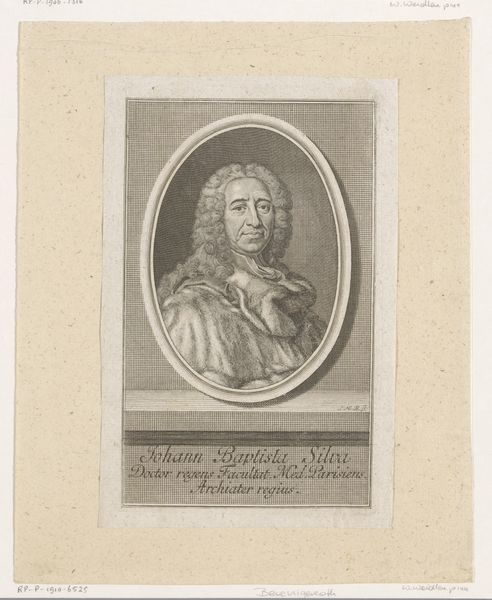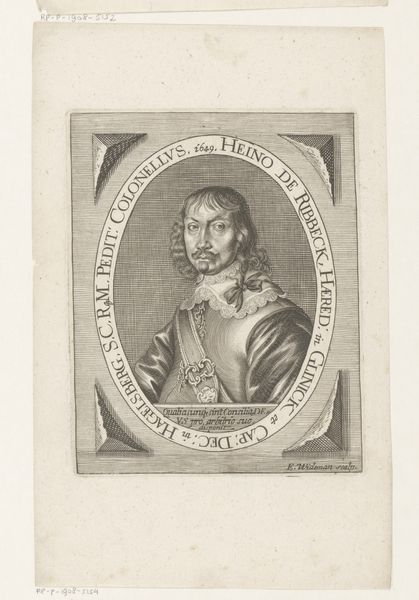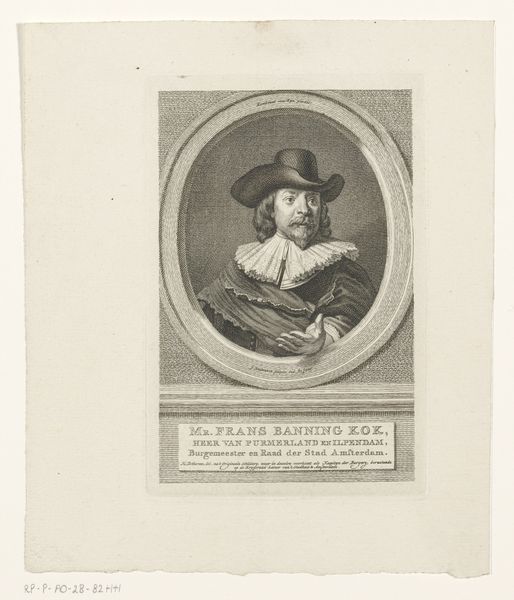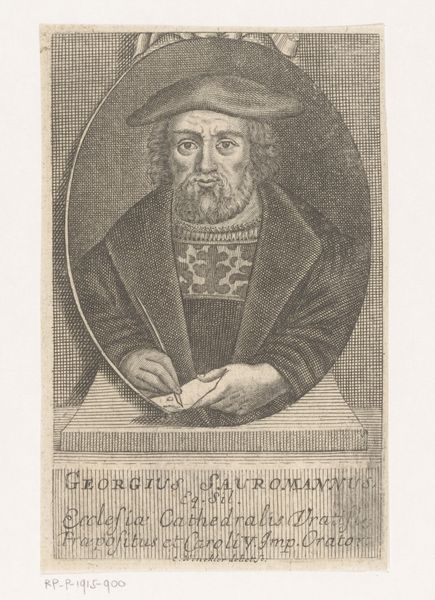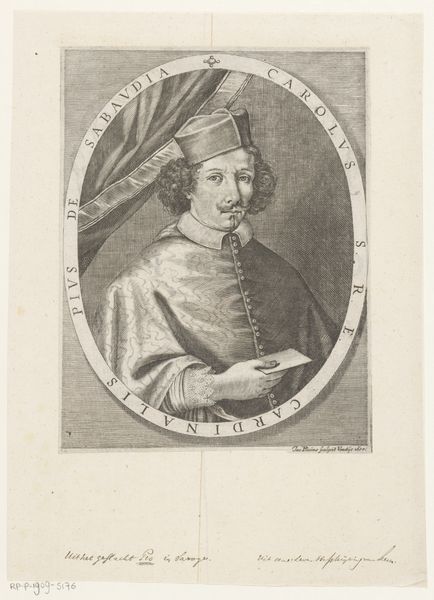
Dimensions: height 148 mm, width 99 mm
Copyright: Rijks Museum: Open Domain
This print, "Portret van Hans Holbein II," was made by Richard Collin in the 17th century. It's an engraving, meaning the image was incised into a metal plate, probably copper, using a tool called a burin. The process is painstaking. The artist would have slowly, deliberately, cut lines into the plate. These lines hold ink, which is then transferred to paper under great pressure. Look closely and you can see the network of fine lines that create the portrait's shading and detail. Engraving was a skilled, specialized trade at this time. It wasn't just about artistic vision; it was about technical mastery and the labor involved in physically cutting the metal. This print would have been part of a larger system of image production, tied to commerce and the dissemination of knowledge. The amount of work involved speaks to the value placed on accurate representation and the power of the printed image in early modern Europe. The print invites us to consider the relationship between art, labor, and the wider world of making.
Comments
No comments
Be the first to comment and join the conversation on the ultimate creative platform.
